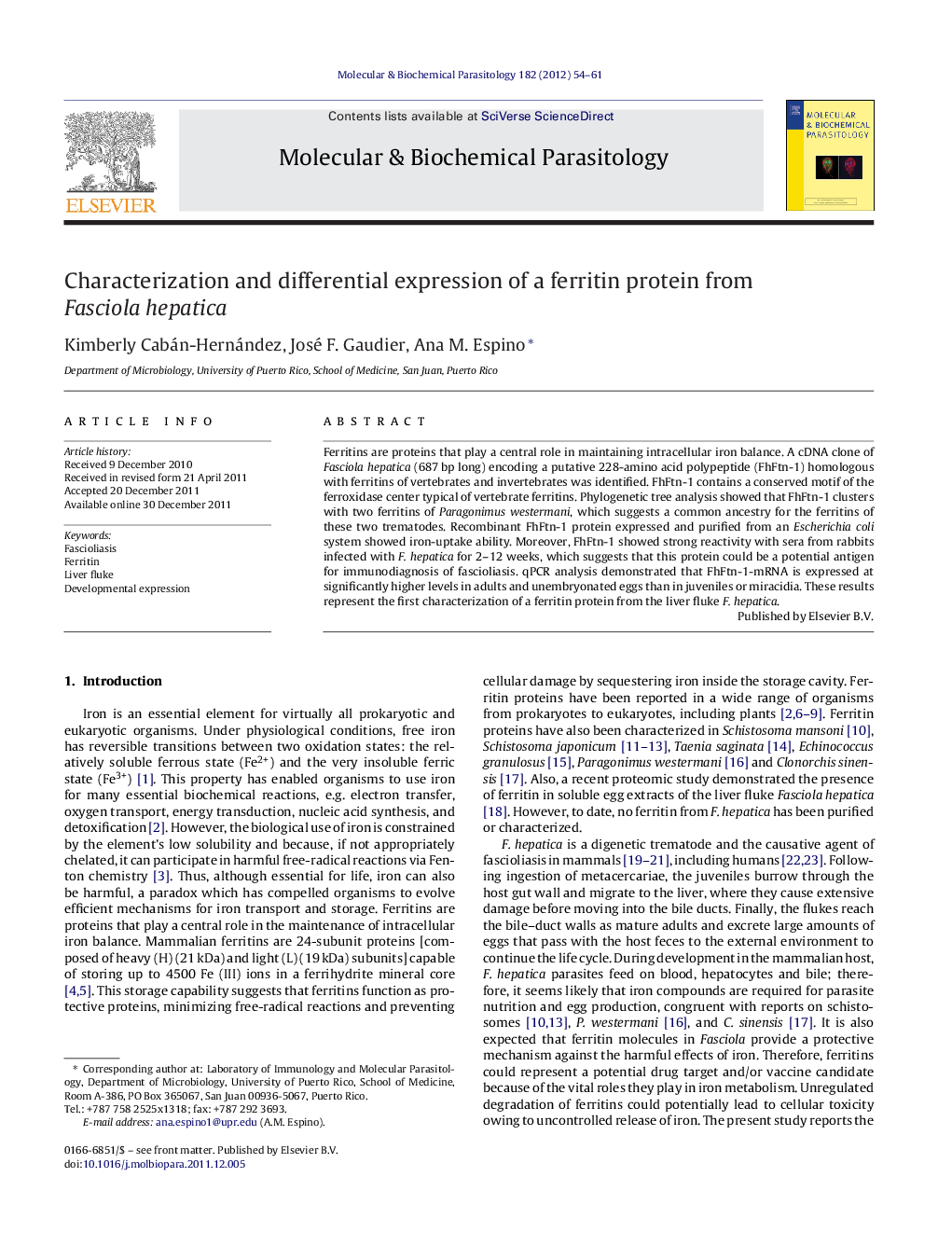| Article ID | Journal | Published Year | Pages | File Type |
|---|---|---|---|---|
| 2829846 | Molecular and Biochemical Parasitology | 2012 | 8 Pages |
Ferritins are proteins that play a central role in maintaining intracellular iron balance. A cDNA clone of Fasciola hepatica (687 bp long) encoding a putative 228-amino acid polypeptide (FhFtn-1) homologous with ferritins of vertebrates and invertebrates was identified. FhFtn-1 contains a conserved motif of the ferroxidase center typical of vertebrate ferritins. Phylogenetic tree analysis showed that FhFtn-1 clusters with two ferritins of Paragonimus westermani, which suggests a common ancestry for the ferritins of these two trematodes. Recombinant FhFtn-1 protein expressed and purified from an Escherichia coli system showed iron-uptake ability. Moreover, FhFtn-1 showed strong reactivity with sera from rabbits infected with F. hepatica for 2–12 weeks, which suggests that this protein could be a potential antigen for immunodiagnosis of fascioliasis. qPCR analysis demonstrated that FhFtn-1-mRNA is expressed at significantly higher levels in adults and unembryonated eggs than in juveniles or miracidia. These results represent the first characterization of a ferritin protein from the liver fluke F. hepatica.
Graphical abstractFigure optionsDownload full-size imageDownload high-quality image (169 K)Download as PowerPoint slideHighlights► This study represents the characterization of a ferritin protein from Fasciola hepatica. ► This protein termed FhFtn-1 was cloned, expressed and characterized. ► It was found that FhFtn-1 is developmentally expressed during the parasite life cycle. ► It was demonstrated that FhFtn-1 has iron-uptake ability. ► FhFtn-1 is highly reactive with sera from animals with 2–12 weeks of infection.
